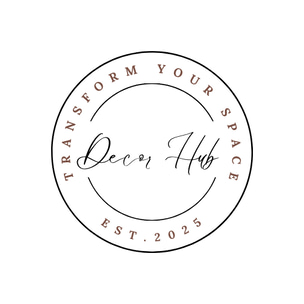The Ultimate Guide to Home Office Decor: Enhance Productivity with Style
In today’s world, having a stylish and functional home office is more important than ever. Whether you work remotely full-time or need a dedicated space for side projects, your workspace should be inspiring and organized. In "The Ultimate Guide to Home Office Decor: Stay Productive and Stylish," we’ll explore expert tips and creative ideas to help you design a space that promotes focus and creativity. From choosing the right furniture and color schemes to organizing your desk and adding personal touches, this guide will show you how to strike the perfect balance between style and productivity. Transform your home office into a place you’ll love working in every day!
2/23/20253 min read
Creating a home office that balances productivity and style is essential for remote workers. By incorporating thoughtful decor choices, individuals can enhance their workspace, fostering creativity and focus. This guide will explore practical tips and inspiring ideas to transform a home office into an inviting and efficient environment.
Color schemes, furniture selection, and personal touches play a vital role in setting the tone of the workspace. Practical arrangements mindful of ergonomics can minimize distractions while maintaining aesthetic appeal. He or she can learn how to marry function with flair, ensuring that the office not only looks good but also supports a productive mindset.
Readers will discover ways to personalize their workspaces without compromising functionality. From choosing the right desk accessories to integrating plants for a touch of nature, each choice contributes to an overall atmosphere that encourages sustained productivity. This guide aims to inspire home office designs that reflect individual style while enhancing work efficiency.
Designing Your Home Office
Creating a functional and aesthetically pleasing home office requires careful consideration of space, style, and lighting. Each element plays a crucial role in ensuring productivity and comfort while working from home.
Choosing the Right Space
Selecting an ideal location for a home office involves assessing various factors. Look for a quiet area away from high-traffic zones to minimize distractions. Consider natural light availability, as bright spaces enhance mood and focus.
Utilizing a dedicated room is ideal. If that’s not possible, designating a corner in a living area or bedroom can work. Ensure enough space for essential furniture, like a desk and chair, to promote an ergonomic setup.
Measure the area carefully to avoid overcrowding. Visualize how items will fit before purchasing furniture. Choosing the right space sets the foundation for an effective workspace.
Balancing Functionality and Style
An effective home office combines practicality and aesthetic appeal. Select furniture that meets operational needs while reflecting personal taste. A sturdy desk with ample storage is important, paired with a comfortable chair that supports posture.
Incorporate elements like color palettes and decorative items that inspire creativity. Use shelving to display books and personal memorabilia, creating an inviting environment.
Consider multifunctional furniture, such as a desk with built-in storage or a foldable table. This maximizes space without sacrificing style. The goal is to create a space that is both visually appealing and conducive to work.
Lighting for Productivity and Comfort
Lighting significantly impacts productivity and comfort in a home office. Natural light is the best option; optimize window placements and consider sheer curtains to diffuse the brightness.
Supplement with various light sources, including task lighting like desk lamps for focused work. Adjustable lighting allows for customization based on time of day and task requirements.
Incorporate soft ambient lighting to reduce eye strain. Use LED lighting with adjustable brightness and color temperature to create the best work conditions. Proper lighting enhances focus and contributes to a positive work atmosphere.
Personalizing Your Workspace
Creating a personalized workspace enhances motivation and productivity. By thoughtfully incorporating colors, art, and organization, an individual can foster a more enjoyable and effective working environment.
Incorporating Colors and Textures
Colors significantly affect mood and productivity. Choosing a color palette that resonates with personal style can influence motivation. Soft pastels may evoke calmness, while vibrant hues can boost energy levels.
Textures also play a role. Incorporating materials like wood, fabric, and metal can create a balanced and inviting space. Consider using texture through rugs, curtains, or cushions. Mixing textures adds richness and can make a workspace feel more dynamic.
Creating a cohesive look involves choosing complementary colors and materials. Using tools like mood boards can help visualize the desired outcome, ensuring a harmonious environment.
Selecting Art and Decorative Elements
Art does more than beautify; it inspires. Choosing artwork that resonates personally can transform a workspace. Whether it’s minimalist prints, motivational quotes, or photographs, each piece should reflect individual taste.
Decorative elements like plants or unique desk accessories can also personalize space. Greenery, for instance, adds life and can improve air quality. Opt for low-maintenance plants, such as succulents or snake plants, if upkeep is a concern.
Incorporating personal items, like souvenirs from travels or crafts, can create a unique identity for the workspace. This blend of art and decor nurtures creativity and comfort.
Organizing for Efficiency
An efficient workspace is essential for productivity. Utilizing storage solutions effectively can minimize clutter. Shelves, drawers, and organizers should be used to keep essential items within reach, promoting a more streamlined workflow.
Desk organization tools, such as trays and pen holders, maintain order. Categorizing items can enhance accessibility, making it easier to find what’s needed during work.
Additionally, considering the layout of the workspace is crucial. Arranging furniture to facilitate movement and workflow can positively impact focus and efficiency. A clear and tailored arrangement supports a productive atmosphere.
